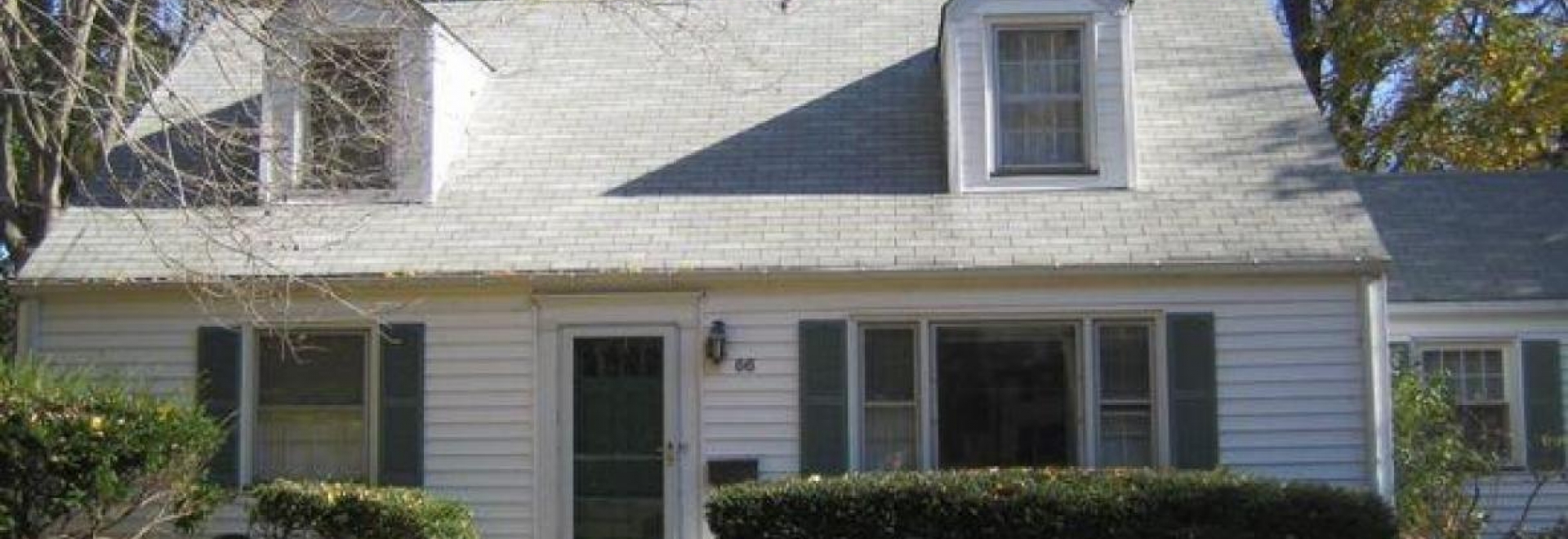
The Clients and their home:
Barbara and George live in a 1950’s Cape Cod style home in Princeton. The home had been taken care of for many years, but needed a number of improvements. Barbara called us to have an energy audit performed in order to quantify what she felt were problem areas in the home. They had “put it off” for many years, but realized that the home lacked insulation, was drafty and dusty, and there were cold spots and inconsistent temperatures throughout the house. In addition to comfort issues, they felt that the utility bills for their house were unusually high and wanted to do something about it. Having recently retired, they expected to spend more time at home, which made it a good time for them to assess the overall efficiency of the home and make some much needed improvements.
The problems with their home:
After performing an energy audit, there were numerous issues that arose in the house. The furnace and air conditioner were at the end of their serviceable life, and air leakage, or the amount of infiltration was high for a house of that size. This was quantified with a blower door test which measured the amount of air ex-filtrating and in-filtrating the house, as well as an infrared camera test which showed missing insulation and areas where outside air []was streaming in to the house. This test was particularly helpful, Barbara and George could finally “see” the drafts from air leakage throughout the house. The basement rim joist area (at the top of the masonry block wall, just below the first floor) had no air sealing or insulation. The entire perimeter of the house sits on this wood, and is one of the first areas to be addressed as the access is easy, the expense is low and the benefits are high. Insulation was another area that needed improvement. There are several attic areas in their Cape Cod style home, and we used several different methods of insulation to replace or supplement the existing insulation. The exterior kitchen walls were found to have very little or no insulation in them. This was particularly important to Barbara and George, who spend much of their day in the kitchen. There are crawlspaces at the second floor front and rear of the house, which are accessible by hatches in the second floor bedrooms. These areas had very little insulation and were a major point of concern, as the square footage of these areas as well as the air leakage occurring through these junctures was very high. The “Devils Triangle” attic above the second floor ceiling was found to have very little insulation and what was there was vermiculite. This vermiculite was tested in accordance with BPI regulation and found to have a 3% asbestos content. Because this is a hazardous material, a remediation company was called in to remove the vermiculite. This was a big relief to Barbara who was glad to have the asbestos removed from the house.
The mechanical equipment in the house was tested for efficiency and combustion safety, and during the efficiency conversation and options for replacement, George asked about high efficiency options. This was the first time geothermal entered the discussion. They were intrigued by the cost savings and the environmentally responsible aspect of heating and cooling only with electricity, and no longer burning fossil fuel. Removal of the outside air conditioner condenser was a bonus, as was the variable speed blower (which made the geothermal unit quieter and the house more comfortable). “But how much money will we save?”
As part of the energy audit, it was determined that the Barbara and George could save about 60% in total energy consumption annually. By upgrading the insulation and air sealing the house, in addition to upgrading to geothermal, they would save about 60% off their utility bills annually. This was a significant reason for George to want to move forward, given that his retirement income was fixed and any money saved was precious to them. “Let’s do it!” was the enthusiastic response to the audit report and proposal.
Installation of the air sealing, insulation and mechanical upgrades began after the NJ Clean Energy Program rebates were confirmed and the vermiculite was removed. Of particular interest to both Barbara and George was the geothermal process. They were concerned that the drilling rig wouldn’t fit into their front yard, but it did! The yard is only about 80 feet wide by 50 feet deep, so space was limited, yet we were able to drill two 375 foot deep bore holes straight down into the front yard! The geothermal loop piping was then installed and grouted in place. The piping was trenched into the basement prior to connecting to the geothermal heat pump unit. Replacement of the existing gas furnace with the geothermal unit was easy and quick, as they are about the same size. No modifications to the duct work were needed, and the thermostat was replaced as well as the air filter
The Results:
What is it like to live in the home? “Awesome,” according to both George and Barbara several years later. Every time I see Barbara in town she thanks me for making her home more comfortable, quieter and for saving them significant money on their bills. They have been saving about $1500 per year since the installation – that’s real money!
